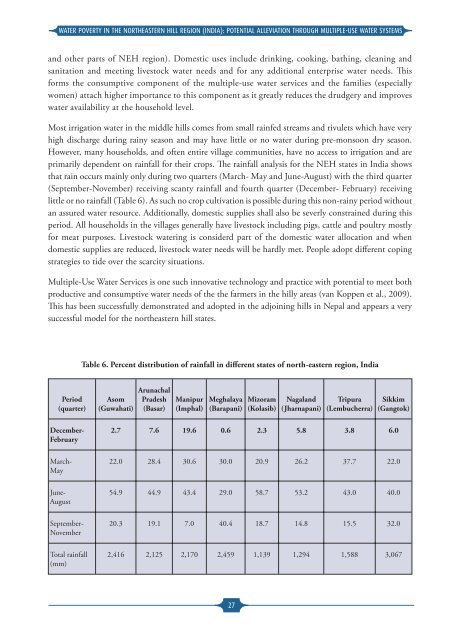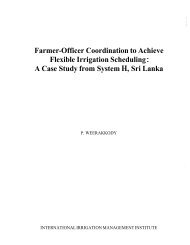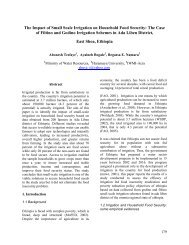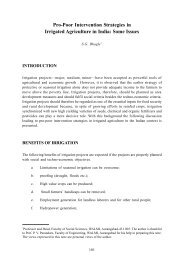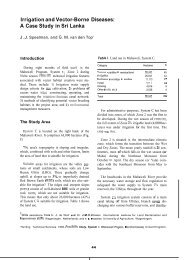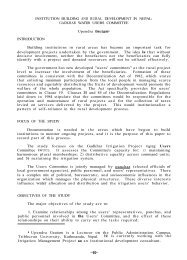WATER POVERTY IN THE NORTHEASTERN HILL REGION (INDIA)
WATER POVERTY IN THE NORTHEASTERN HILL REGION (INDIA)
WATER POVERTY IN THE NORTHEASTERN HILL REGION (INDIA)
Create successful ePaper yourself
Turn your PDF publications into a flip-book with our unique Google optimized e-Paper software.
<strong>WATER</strong> <strong>POVERTY</strong> <strong>IN</strong> <strong>THE</strong> NOR<strong>THE</strong>ASTERN <strong>HILL</strong> <strong>REGION</strong> (<strong>IN</strong>DIA): POTENTIAL ALLEVIATION THROUGH MULTIPLE-USE <strong>WATER</strong> SYSTEMSand other parts of NEH region). Domestic uses include drinking, cooking, bathing, cleaning andsanitation and meeting livestock water needs and for any additional enterprise water needs. Thisforms the consumptive component of the multiple-use water services and the families (especiallywomen) attach higher importance to this component as it greatly reduces the drudgery and improveswater availability at the household level.Most irrigation water in the middle hills comes from small rainfed streams and rivulets which have veryhigh discharge during rainy season and may have little or no water during pre-monsoon dry season.However, many households, and often entire village communities, have no access to irrigation and areprimarily dependent on rainfall for their crops. The rainfall analysis for the NEH states in India showsthat rain occurs mainly only during two quarters (March- May and June-August) with the third quarter(September-November) receiving scanty rainfall and fourth quarter (December- February) receivinglittle or no rainfall (Table 6). As such no crop cultivation is possible during this non-rainy period withoutan assured water resource. Additionally, domestic supplies shall also be severly constrained during thisperiod. All households in the villages generally have livestock including pigs, cattle and poultry mostlyfor meat purposes. Livestock watering is considerd part of the domestic water allocation and whendomestic supplies are reduced, livestock water needs will be hardly met. People adopt different copingstrategies to tide over the scarcity situations.Multiple-Use Water Services is one such innovative technology and practice with potential to meet bothproductive and consumptive water needs of the the farmers in the hilly areas (van Koppen et al., 2009).This has been successfully demonstrated and adopted in the adjoining hills in Nepal and appears a verysuccessful model for the northeastern hill states.Table 6. Percent distribution of rainfall in different states of north-eastern region, IndiaPeriod(quarter)Asom(Guwahati)ArunachalPradesh(Basar)Manipur(Imphal)Meghalaya(Barapani)Mizoram(Kolasib)Nagaland(Jharnapani)Tripura(Lembucherra)Sikkim(Gangtok)December-February2.7 7.6 19.6 0.6 2.3 5.8 3.8 6.0March-May22.0 28.4 30.6 30.0 20.9 26.2 37.7 22.0June-August54.9 44.9 43.4 29.0 58.7 53.2 43.0 40.0September-November20.3 19.1 7.0 40.4 18.7 14.8 15.5 32.0Total rainfall(mm)2,416 2,125 2,170 2,459 1,139 1,294 1,588 3,06727


